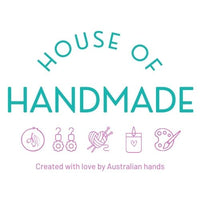
Today where isolation and stress are prevalent, finding ways to foster meaningful connections is more important than ever. One powerful way to build connections and support mental health is through creative communities. Whether in person or online, creative communities—groups of individuals who come together to engage in artistic and creative activities—offer a supportive environment that can promote mental well-being, reduce stress, and increase feelings of belonging.
1. Social Connection and Mental Health
Being part of a creative community offers one of the most important protective factors for mental health: social connection. A study published in The Australian & New Zealand Journal of Psychiatry found that social participation in creative activities significantly improved mental health outcomes for individuals, particularly in terms of reducing symptoms of depression and anxiety (Creech et al., 2013). These creative spaces provide opportunities to interact with others, share experiences, and create a sense of belonging—crucial elements in maintaining good mental health.
Participating in a community allows individuals to feel supported by others who understand the therapeutic value of creativity. Research has shown that the shared experience of engaging in a collective creative process enhances feelings of camaraderie and boosts emotional well-being. The sense of belonging that comes with being part of a group can help reduce feelings of loneliness and isolation, two significant contributors to poor mental health.
2. Collaboration and Personal Growth
One of the most significant benefits of being part of a creative community is the opportunity for collaboration. In creative spaces, whether it's a painting group, a knitting circle, or a writing workshop, individuals can share their work, provide feedback, and collaborate on projects. Research published in The Journal of Creative Behavior highlights that collaboration within a creative community promotes personal growth and skill development, as participants learn from one another and challenge each other's perspectives (Boden, 2016).
Moreover, being part of a creative group often helps individuals push past their creative limits and try new things. This kind of growth can have a profound impact on self-esteem and confidence. When people see their work appreciated by others, they are more likely to develop a positive sense of self-worth, which can be a significant factor in improving mental health.
3. Creativity as a Coping Mechanism
Creative communities can also provide a safe space to manage life’s challenges. Many people turn to creativity as a way to cope with stress, trauma, or grief. A study in The Australian Journal of Arts Therapy found that participants in group art therapy showed significant improvements in emotional regulation and a reduction in stress levels through collaborative creative processes (White & Spence, 2017). The community aspect of these groups fosters a safe environment where individuals can share their struggles and be met with empathy and understanding.
Working together in a group can help create a sense of purpose, especially when faced with difficult personal circumstances. The act of creating with others can also serve as a form of emotional expression that words sometimes cannot convey. This non-verbal communication, supported by the group dynamic, can be an incredibly powerful tool for emotional healing.
4. Encouraging Well-being Through Routine Engagement
Consistent participation in a creative community also encourages routine, which is vital for mental health. Engaging regularly in creative activities within a group setting offers structure and a sense of commitment. This consistency can be a buffer against stress and a great motivator for individuals who may otherwise feel disconnected or overwhelmed. Studies have shown that maintaining a routine of creative activity promotes resilience and well-being, making creative communities an important asset in maintaining mental health (Creech et al., 2013).
Creative communities offer much more than a space for artistic expression—they are vital for fostering connection, collaboration, and emotional support. By participating in these communities, individuals not only nurture their creativity but also improve their mental health. The research clearly shows that the collective experience of engaging in creative activities together can reduce stress, combat feelings of isolation, and promote personal growth. Whether in person or online, being part of a creative community can be an essential tool for enhancing well-being and building resilience. At the House of Handmade, we have creative craft workshops for everyone, make sure to connect with our crafting community today!
References:
-
Boden, M. (2016). The role of collaboration in creativity: Exploring the collective process in creative communities. The Journal of Creative Behavior, 50(3), 232-249.
-
Creech, A., Hall, D., Varvarigou, M., & Varney, J. (2013). The benefits of creative group participation: A study of arts and mental health. Australian & New Zealand Journal of Psychiatry, 47(7), 628-633.
-
White, R., & Spence, M. (2017). Creative collaboration in art therapy: The role of the group in emotional healing. The Australian Journal of Arts Therapy, 8(2), 94-101.

Leave a comment